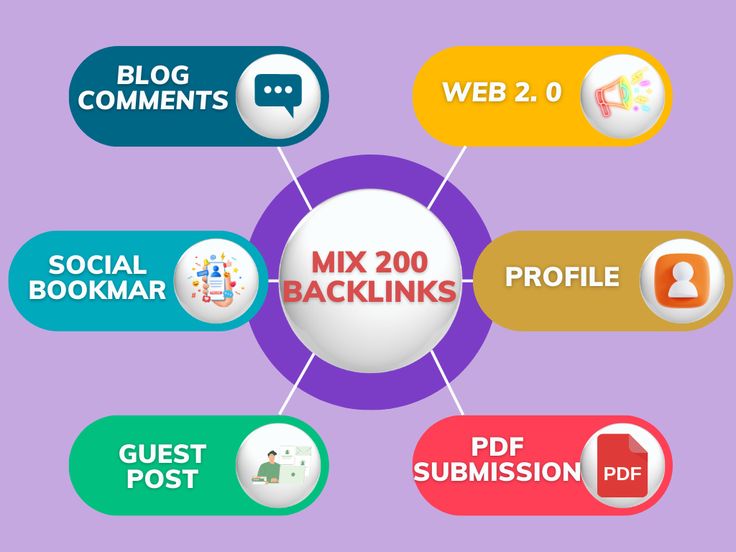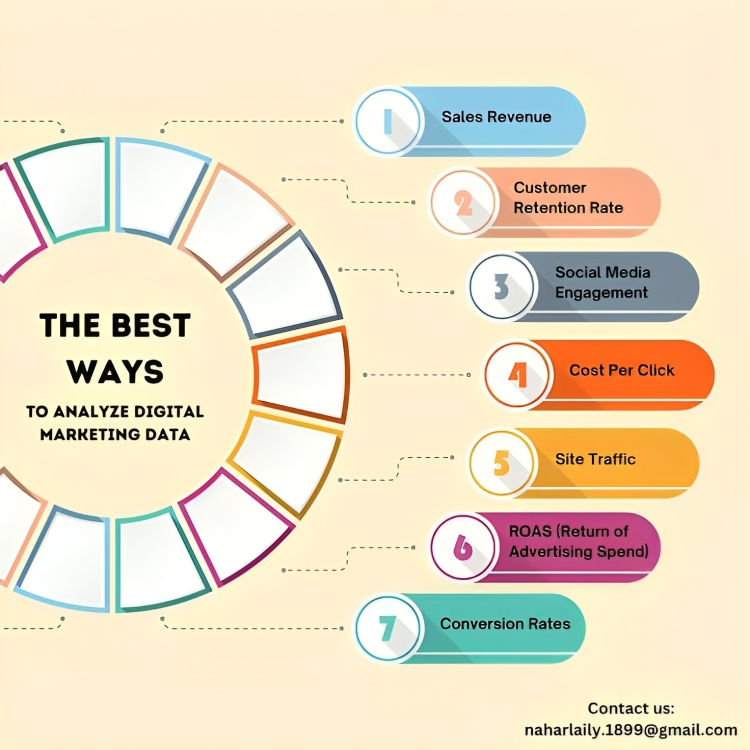SEO (Search Engine Optimization) is the cornerstone of digital marketing success. It ensures your content ranks higher on search engines, driving more organic traffic and boosting conversions. Here’s how to optimize your SEO strategy for maximum impact.
1. Conduct Keyword Research

Identify the most relevant keywords for your audience. Tools like Google Keyword Planner or Ahrefs can help you find high-ranking keywords that match your niche.
SEO: Conduct Keyword Research to Boost Your Rankings
SEO begins with effective keyword research—the foundation of every successful digital marketing strategy. Targeting the right keywords ensures your content reaches the right audience, driving traffic and conversions. Here’s how to master keyword research.
1. Understand Your Audience
Know your target audience’s search intent. Are they looking for information, making comparisons, or ready to buy? Tailor your keywords to match their needs.
2. Use SEO Tools
Leverage tools like Google Keyword Planner, Ahrefs, or SEMrush to identify high-traffic, low-competition keywords. These tools also reveal long-tail keywords that can target niche audiences effectively.
3. Analyze Competitors
Check what keywords your competitors rank for. Tools like Moz or Ubersuggest can help you uncover gaps and opportunities in your SEO strategy.
4. Focus on Long-Tail Keywords
Long-tail keywords are specific, less competitive, and more likely to convert. For instance, “best SEO tools for small businesses” is more targeted than “SEO tools.”
5. Evaluate Keyword Metrics
Analyze search volume, keyword difficulty, and cost-per-click (CPC). Choose keywords that balance search volume with lower competition.
6. Keep Keywords Relevant
Ensure your chosen keywords align with your content. Irrelevant keywords can harm rankings and user experience.
7. Regularly Update Your Research
SEO trends shift constantly. Periodically revisit your keyword strategy to stay ahead of competitors and algorithm changes.
Conducting keyword research is vital for effective SEO. By targeting the right terms, you can create content that resonates with your audience and ranks higher on search engines. Start refining your keyword strategy today!
2. Create High-Quality Content

Content is king in SEO. Write informative, engaging, and unique content that answers your audience’s questions. Use your primary keywords naturally throughout the content.
SEO: Create High-Quality Content to Dominate Rankings
In the world of SEO, creating high-quality content is key to ranking higher, attracting traffic, and keeping users engaged. Here’s how to craft exceptional content that boosts your SEO performance.
1. Understand Your Audience
Effective content starts with knowing your audience. Identify their pain points, interests, and questions, then create content that directly addresses these needs.
2. Incorporate SEO Keywords Naturally
Use targeted keywords strategically in titles, headers, and throughout the content. Avoid keyword stuffing, which can harm your rankings.
3. Focus on Originality
Unique, well-researched content stands out to both users and search engines. Ensure your content provides fresh insights or perspectives on a topic.
4. Optimize Readability
Write in a clear, concise, and engaging style.Break content into short paragraphs, use bullet points, and add subheadings for better readability.
5. Add Visual Elements
Images, infographics, and videos enhance user experience and keep readers on your page longer, improving your SEO metrics.
6. Provide Value
Content that educates, entertains, or solves problems is more likely to be shared and linked to, boosting your authority.
7. Update Content Regularly
Keep your content fresh by updating outdated information, adding new insights, and optimizing it for current SEO trends.
8. Include Clear CTAs
Encourage engagement by adding clear calls-to-action (CTAs), such as subscribing, sharing, or exploring related content.
High-quality content is the backbone of SEO. By delivering value to your audience, you can build trust, improve rankings, and drive long-term success. Start creating impactful content today!
3. Optimize On-Page Elements

Focus on meta titles, descriptions, headers, and URL structures. Include your keywords in these elements to help search engines understand your content.
SEO: Optimize On-Page Elements to Improve Your Rankings
Optimizing on-page elements is essential for SEO success. These factors help search engines understand your content and enhance user experience. Here’s how to optimize on-page elements effectively.
1. Craft an Engaging Meta Title
Your meta title is the first impression users see. Include your primary keyword and keep it under 60 characters for better visibility.
2. Write a Compelling Meta Description
Meta descriptions should summarize your content in 150–160 characters. Incorporate keywords naturally to boost click-through rates.
3. Use Header Tags Strategically
Organize content with header tags (H1, H2, H3). Include keywords in these headings to guide both readers and search engines.
4. Optimize URL Structure
Keep URLs short, descriptive, and keyword-rich. For example, “yourdomain.com/seo-tips” is more effective than a random string of numbers.
5. Incorporate Keywords Naturally
Place your target keyword in the first 100 words, headers, and throughout the content without overloading.
6. Improve Internal Linking
Link to relevant internal pages to enhance navigation and share link equity.Use descriptive anchor text for clarity.
7. Add Alt Text to Images
Include descriptive alt text for images using keywords when appropriate. This improves accessibility and boosts image SEO.
8. Optimize for Mobile Usability
Ensure your site is mobile-friendly. Search engines prioritize mobile-optimized websites in rankings.
Optimizing on-page SEO elements is a powerful way to improve your site’s visibility and user engagement. Implement these strategies to boost your rankings and attract more organic traffic!
4. Build Quality Backlinks

Backlinks from authoritative websites boost your site’s credibility. Partner with industry experts or create shareable content to gain natural backlinks.
SEO: How to Build Quality Backlinks for Improved Rankings
In the world of SEO, backlinks are one of the most important factors for boosting your website’s authority and improving your search engine rankings. A backlink is essentially a vote of confidence from another website, signaling that your content is valuable and trustworthy. Quality backlinks from authoritative websites can have a significant impact on your SEO strategy. In this blog, we’ll dive into some proven methods for building quality backlinks that will elevate your SEO efforts and improve your online visibility.
1. Create Exceptional Content That People Want to Link To
The first and most crucial step in building backlinks is to create high-quality, engaging content. Search engines and users alike value well-researched, insightful, and helpful content. When you produce valuable content, people are naturally more inclined to link to it as a resource. This could be in the form of in-depth blog posts, research studies, detailed guides, or infographics that offer unique insights or solve a particular problem. By consistently providing value, your content naturally attracts backlinks.
2. Guest Blogging on Reputable Websites
Guest blogging is a time-tested method for building backlinks and expanding your reach. When you write guest posts for authoritative blogs or websites in your industry, you can include a backlink to your site either within the content or in your author bio. However, it’s important to ensure that the websites you guest post on have high domain authority and a relevant audience. Quality guest posts not only help with backlink building but also help you establish credibility in your field.
3. Utilize the Broken Link Building Strategy
Broken link building is an effective way to gain backlinks while helping website owners improve their content. This strategy involves finding broken links on authoritative websites and offering your content as a replacement. Using tools like Ahrefs or SEMrush, you can identify broken links on relevant websites in your niche. Once you’ve identified these links, reach out to the site owner or webmaster, inform them about the broken link, and suggest your content as a suitable alternative. It’s a win-win: the website owner fixes a broken link, and you gain a quality backlink.
4. Participate in Industry Forums and Online Communities
Engaging with online communities, forums, and niche-related discussions is another great way to build backlinks. Platforms like Quora, Reddit, and industry-specific forums allow you to engage with users and share helpful advice. By answering questions, providing insights, and linking to relevant content on your website, you can build backlinks that benefit your SEO efforts. Just be sure your answers are valuable and not overly promotional, as spammy behavior can hurt your reputation.
5. Submit Your Website to High-Quality Directories
Submitting your website to reputable and high-authority directories can help you gain valuable backlinks.These directories are often viewed as valuable resources by search engines, and being listed on them can improve your website’s credibility. Focus on niche-specific directories and those that are recognized as reputable in your industry. Avoid low-quality, spammy directories, as these can negatively impact your SEO and rankings.
6. Build Relationships with Influencers and Bloggers
Building relationships with influencers, bloggers, and journalists in your industry can lead to valuable backlink opportunities. Influencers often link to content that aligns with their brand or provides value to their audience. By networking with these individuals, engaging with their content, and sharing your insights, you can foster relationships that may lead to backlinks. Collaborative content, interviews, or joint ventures are excellent ways to leverage these relationships for backlinks.
7. Analyze Competitor Backlinks
One of the most effective ways to discover backlink opportunities is to analyze your competitors’ backlink profiles. Tools like Ahrefs, SEMrush, or Moz allow you to see which websites are linking to your competitors. This can help you uncover new backlink opportunities by targeting the same sources. By reaching out to the websites that link to your competitors and offering your own high-quality content, you can increase your chances of earning similar backlinks.
8. Focus on Link Relevance and Quality
When building backlinks, always prioritize quality over quantity. A few backlinks from authoritative, relevant sites are much more valuable than numerous links from low-quality or unrelated websites. Search engines like Google prioritize backlinks from reputable and relevant websites, so focus on acquiring links from sources within your niche. Building backlinks from unrelated or spammy websites can actually harm your SEO efforts and hurt your rankings.
5. Improve Site Speed and Mobile Usability

A fast, mobile-friendly website enhances user experience and ranks better on search engines. Utilize tools such as Google PageSpeed Insights to enhance your website’s performance.
SEO: How to Improve Site Speed and Mobile Usability for Better Rankings
In the world of SEO, improving your site’s speed and mobile usability are essential factors that can significantly enhance your website’s performance in search rankings. Google, in particular, emphasizes user experience as a ranking factor, and since speed and mobile usability directly influence how users interact with your website, optimizing these elements is crucial. This blog will walk you through why site speed and mobile usability matter for SEO and how you can improve both for better search engine visibility and user experience.
Why Site Speed is Important for SEO
Site speed is a key element in improving your SEO ranking. It refers to how fast your web pages load, and it impacts both user experience and search engine algorithms. Google has confirmed that page load speed is a ranking factor, meaning faster sites have a higher chance of ranking well in the search engine results pages (SERPs).
How Site Speed Affects SEO:
1.User Experience: If your website takes too long to load, visitors are likely to leave before engaging with your content. This leads to a high bounce rate, which signals to Google that your website may not be valuable to users, ultimately lowering your SEO ranking.
2.Ranking Factors: Google uses site speed as part of its ranking criteria. A fast-loading site is favored in search results, helping you outrank competitors with slower sites.
3.Conversion Rates: Faster sites have better conversion rates.Faster websites typically result in higher engagement and conversions, whether users are making a purchase, subscribing to a newsletter, or completing a form.
How to Improve Site Speed for SEO:
Optimize Images: Large image files are often the biggest culprit for slow website speeds. Use image compression tools like TinyPNG or ImageOptim to reduce image size without sacrificing quality.
Minify Your Code: Reduce the size of your website’s CSS, JavaScript, and HTML by removing unnecessary characters, spaces, and line breaks. This helps your website load faster and improves its performance.
Use a Content Delivery Network (CDN): A CDN stores copies of your website on servers around the world, allowing your content to be served from a location closer to your user, reducing load times.
Leverage Browser Caching: Enable browser caching so that returning visitors can load pages faster. Caching stores elements of your website in users’ browsers, which speeds up loading times for subsequent visits.
Upgrade Your Hosting: Shared hosting can slow down your website as traffic increases. Consider upgrading to a VPS (Virtual Private Server) or dedicated hosting for faster, more reliable performance.
Why Mobile Usability is Crucial for SEO
With an increasing number of users browsing the web on mobile devices, mobile usability has become a major SEO factor. Google now uses mobile-first indexing, which means it primarily uses the mobile version of your website for ranking and indexing. If your site isn’t optimized for mobile, your SEO ranking will likely suffer.
How Mobile Usability Affects SEO:
1.Mobile-First Indexing: Google prioritizes mobile-friendly websites when ranking search results. If your website isn’t optimized for mobile, it could affect your rankings negatively, regardless of how well your desktop version performs.
2.Better User Engagement: A mobile-optimized site leads to a better user experience, resulting in longer sessions, lower bounce rates, and higher engagement—all of which are positive for SEO.
3.Increased Traffic: Today, mobile devices are the main method through which users access the web.Having a mobile-friendly site ensures you capture traffic from this growing audience segment.
How to Improve Mobile Usability for SEO:
Implement Responsive Web Design: A responsive design adjusts your website’s layout depending on the screen size, ensuring that your site looks great and functions properly on mobile, tablet, and desktop devices. Google recommends using a responsive design for mobile SEO.
Simplify Navigation: Mobile screens are smaller, so make your navigation simple and intuitive. Use collapsible menus, large buttons, and minimalistic design to make it easier for users to find content on their mobile devices.
Optimize Font Size: Text that’s too small or difficult to read on mobile screens can frustrate users. Use larger fonts (at least 16px) and ensure there’s good contrast between text and background.
Avoid Intrusive Pop-ups: Pop-ups are particularly disruptive on mobile devices, as they can block content and be difficult to close. Google penalizes websites that use intrusive pop-ups, so limit their use on mobile.
Make Buttons and Links Easy to Tap: On mobile devices, clickable elements like buttons and links should be large enough to be tapped easily. Avoid small, hard-to-click buttons that can annoy users.
Tools to Measure Site Speed and Mobile Usability
To ensure your website’s speed and mobile usability are optimized for SEO, use these helpful tools:
Google PageSpeed Insights: This tool evaluates your website’s speed and provides actionable insights for both desktop and mobile performance.
GTmetrix: GTmetrix analyzes load times and performance, offering recommendations for optimizing both site speed and mobile usability.
Google Mobile-Friendly Test: This tool checks if your site is mobile-friendly and gives suggestions for improving its mobile usability.
Google Search Console: The Mobile Usability Report in Google Search Console helps identify mobile issues and provides recommendations for improvement.
6. Leverage Analytics Tools

Track your SEO performance using tools like Google Analytics or SEMrush.Consistently track metrics such as organic traffic, bounce rate, and keyword rankings.
7. Stay Updated with SEO Trends

SEO evolves constantly. Keep up with algorithm updates and new strategies to maintain your competitive edge.learn more:
By prioritizing SEO in your digital marketing strategy, you can attract more traffic, enhance brand visibility, and achieve long-term success. Start optimizing today!
